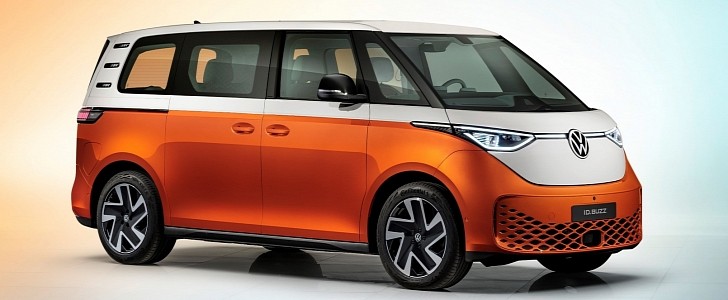The original Volkswagen Bus had a drag coefficient of 0.38. Add its larger frontal area to that equation, and you’ll end up with a vehicle that was not that efficient. The ID. BUZZ had to improve that and achieved a drag coefficient of only 0.285, comparable to that of 1990s sedans. A new video Volkswagen released could tell us more about that. Sadly, it didn’t.
The documentary was supposed to share backstage information on the entire development process involving the VW Bus electric grandchild. Although it is quite big – 41 minutes – we made sure to check it for exciting details about how the ID. BUZZ came to life. If you have the same expectations, we just saved you 41 minutes.
We understand that the video was produced by the marketing team. The sad part is that it is a marketing piece from start to end. There are just a few glimpses of interesting aspects of the development, such as the production of the first prototypes or how they went to endurance testing to ensure customers will have no surprises with the car. If you ask us how many kilometers these prototypes have run, the video does not state that.
Another nice moment of the video is when Volkswagen engineers mentioned that tests in dusty environments are essential because dust can collect in some parts of the body and cause problems at a later date. The company knows quite well what that means. The Amarok faced an issue related to that with its 2-liter EA288 TDI engine years ago.
It had a chronic problem with dust. The cambelt would degrade way faster than the 120,000 kilometers (74,565 miles) that Volkswagen said it would last. The timing belt could break in pickup trucks as soon as they had 10,000 km (6,214 mi) on the clock. The company eventually developed a kit called EDK that tried to prevent the problem. Still, the reputation damage made the company stop selling the pickup truck with that engine in some markets. It is clear that Volkswagen does not want the ID. BUZZ to face similar problems.
If you expect to learn how the company developed the ID. BUZZ to be so aerodynamic, which were the most challenging aspects of bringing it to production lines or anything similar, wait for an interview about that. Volkswagen said it tried to offer something like that, but it failed the mission.
We understand that the video was produced by the marketing team. The sad part is that it is a marketing piece from start to end. There are just a few glimpses of interesting aspects of the development, such as the production of the first prototypes or how they went to endurance testing to ensure customers will have no surprises with the car. If you ask us how many kilometers these prototypes have run, the video does not state that.
Another nice moment of the video is when Volkswagen engineers mentioned that tests in dusty environments are essential because dust can collect in some parts of the body and cause problems at a later date. The company knows quite well what that means. The Amarok faced an issue related to that with its 2-liter EA288 TDI engine years ago.
It had a chronic problem with dust. The cambelt would degrade way faster than the 120,000 kilometers (74,565 miles) that Volkswagen said it would last. The timing belt could break in pickup trucks as soon as they had 10,000 km (6,214 mi) on the clock. The company eventually developed a kit called EDK that tried to prevent the problem. Still, the reputation damage made the company stop selling the pickup truck with that engine in some markets. It is clear that Volkswagen does not want the ID. BUZZ to face similar problems.
If you expect to learn how the company developed the ID. BUZZ to be so aerodynamic, which were the most challenging aspects of bringing it to production lines or anything similar, wait for an interview about that. Volkswagen said it tried to offer something like that, but it failed the mission.























